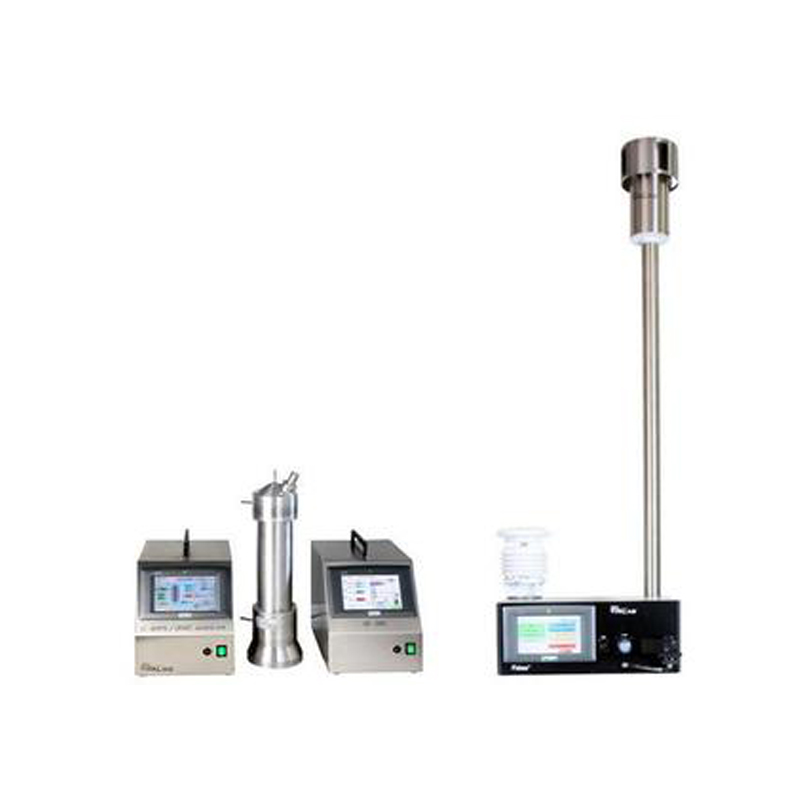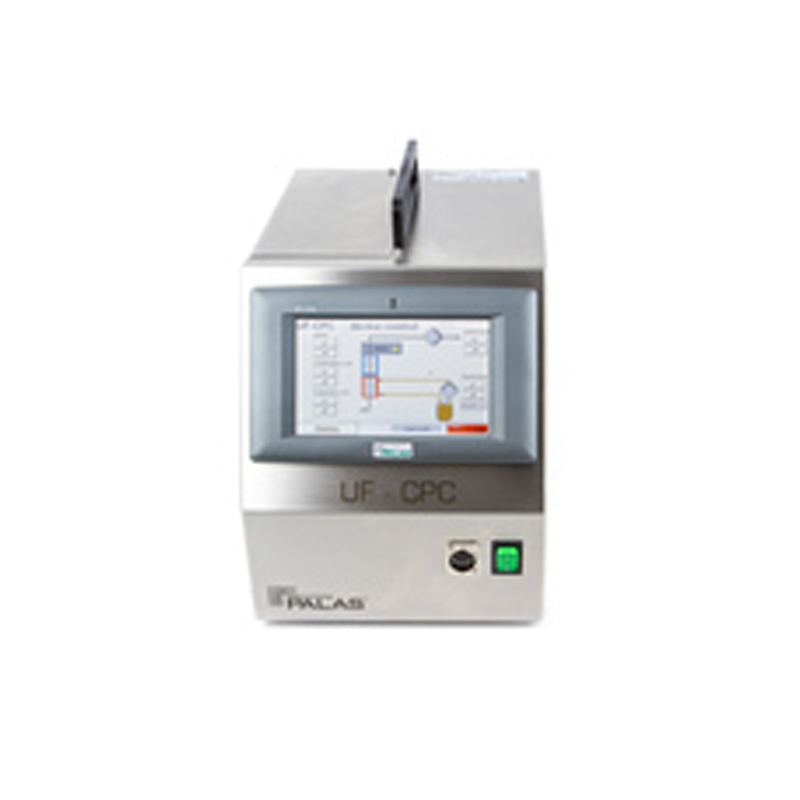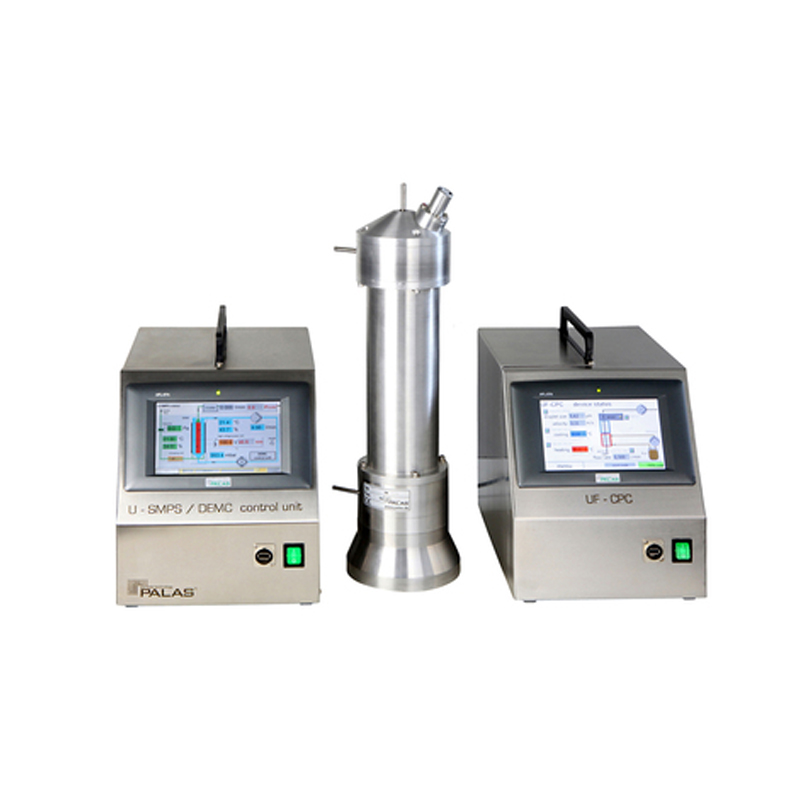Description
The Palas® U-RANGE combines two systems for the continuous measurement of airborne particles in the size range of 8 nm to 40 μm.
The U-SMPS is a standard system for extremely precise measurements of nanoparticle size distributions. Aerosol particles are selected in the classifier (DEMC) according to their electrical mobility and then counted by a condensation particle counter (UF‐CPC). Prof. Wiedensohler (IfT Leipzig, Germany) developed the algorithm used by Palas® for inversion of the measured data to yield the particle size distribution for the U-SMPS.
The Fidas® 200 is a fine dust measurement system for ambient air quality measurements for regulatory purposes. It uses the recognized measurement technology of optical light scattering of single particles and is equipped with an LED light source with stable output and long lifetime.
In addition to the measurement of the particle size distribution in the size range of 300 nm to 40 μm, it continuously and simultaneously determines the following PM‐fractions: PM1, PM2.5, PM4, PM10, and TSP (PMtot).
The Fidas® 200 is also equipped with a filter holder for the insertion of an absolute filter (47 or 50 mm in diameter). This enables a subsequent chemical analysis of the composition of the aerosol, for example.
The U-RANGE is operated using a graphical user interface on a touch screen. The voltage in the DEMC classifier is varied continuously, resulting in higher count statistics per size channel. In addition, it enables a size resolution of up to 64 size channels per decade. The integrated data logger allows linear and logarithmic display of the measured values on the device itself.
The enclosed evaluation software provides various data evaluation (extensive statistics and averaging) and export capabilities.
The U-RANGE is typically operated as a stand‐alone device, but can also be connected to a computer or network using various interfaces (USB, LAN, WLAN, RS-232/485).
Accurate size determination and reliable performance are extremely important in applications involving the U-RANGE. All components are required to pass strict quality assurance testing and are assembled in‐house.
U-RANGE measurement results are a combination of the results from the U‐SMPS and the Fidas® and can be completely displayed and analyzed on the touch screen. Up to 8 measurements are able to be compared here (Figure 1).

Figure 1: Graphic display of the measurement data on the U-RANGE touch screen Blue: Indoor air concentration within a production facility prior to the start of work; red: Measurement at the same site following the start of work
Principle of operation of the U-SMPS (Figure 2):
The aerosol is conditioned (e.g. dried, neutralized) before it enters the size classifier (DEMC column). The aerosol is then directed into the DEMC column via the inlet. The aerosol flow along the outer electrode is carefully combined here with a sheath air flow. This sheath air is a dry, particle-free carrier gas (typically air) with a higher volume than the aerosol that is continuously circulated in a closed loop. The sheath air to sample air volume ratio defines the resolution capacity of the size classifier.

Figure 2: Principle of operation of the U-SMPS
A radially symmetric electric field is generated between the inner and outer electrode by applying voltage. The inner electrode is positively charged with a small slit at the end. By balancing the electrical force on each particle with its aerodynamic drag force in the electrical field, negatively charged particles are diverted to the positive electrode.
In operation, the voltage and thus the electrical field change continuously. Particles with appropriate electrical mobility pass through the slit and are counted by a condensation particle counter (UF‐CPC).
Principle of operation of the Fidas® fine dust measurement system (Figure 3):

Figure 3: Principle of operation of the Fidas®
User interface and software:
Based on continuous customer feedback, the user interface and software have been designed for intuitive operation and real-time control and display of measurement data and parameters. The system is equipped with an integrated data logger and supports network functions.
The enclosed PDAnalyze evaluation software provides sophisticated analytical and export capabilities. The measured data are able to be displayed and evaluated with many available options. These enable the data from the U-SMPS and Fidas® systems, for example, to be displayed and evaluated separately (Figure 4) or together.

Figure 4: PDAnalyze evaluation software Measurement of indoor air concentration and display of number concentration Blue: Data from the U-SMPS, red: Data from the Fidas®




